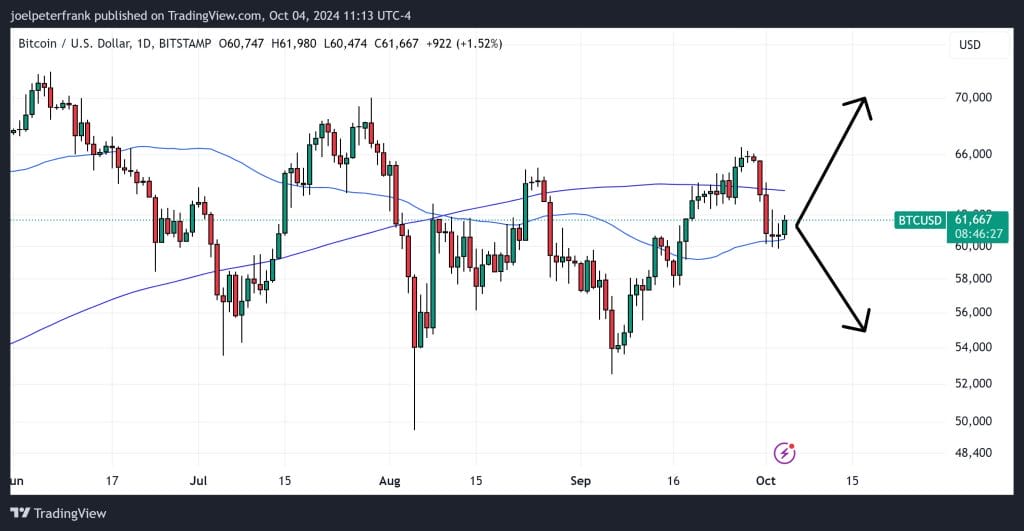Last updated:
 Why Trust Cryptonews
Why Trust Cryptonews

Following the release of a stronger-than-expected US jobs report in September, the Bitcoin price has fluctuated between $61,000 and $62,000 as traders assess the economic outlook and geopolitical risks.
The US economy added 254,000 jobs in September 2024, substantially surpassing Wall Street’s expectation of 147,000.
The unemployment rate also dropped to 4.1%, while the annual pace of wage growth increased to 4.0% from 3.8% in August.
This stronger-than-expected jobs report prompted macro traders to largely eliminate bets on another 50bps rate cut from the Federal Reserve in November.
According to the CME Fed Watch Tool, money markets are now pricing a nearly 95% probability of a 25bps rate cut next month.
The report supports the narrative that a soft landing for the US economy is still achievable — meaning the Fed may succeed in bringing inflation under control without triggering a recession.
While this points to a slower pace of rate cuts, substantial cuts are still expected in late 2024 and 2025.
Continued robust US economic growth, alongside a more accommodative monetary policy, could create a favorable environment for risk assets, including Bitcoin.
Despite the optimism, the Bitcoin price remains down by about 6.6% since the beginning of the week. Is a rebound on the horizon?
What’s Next for the Bitcoin Price After the US Jobs Report?
Geopolitical tensions continue to play a significant role in shaping the Bitcoin market and broader financial markets.
Israel is anticipated to retaliate against Iran after a missile attack earlier this week, raising fears of a broader conflict.
Such an escalation could severely disrupt oil flows from the Middle East, posing a major risk to the global economy and keeping risk appetite in check across markets, particularly in crypto.
Without the recent geopolitical tensions, this week’s US economic data could have fueled a strong Bitcoin rally, potentially pushing the price as high as $70,000.
However, due to the worsening geopolitical landscape, October may not see the typical “Uptober” surge that some market participants expected.
Polymarket users currently assign a 25% chance that Bitcoin reaches $70,000 this month, compared to a 42% chance it falls to $55,000.

In contrast, Standard Chartered issued a note earlier this week warning that a short-term dip below $60,000 is likely, but encouraged investors to buy the dip.
Long-Term Outlook for the Bitcoin Price
Geopolitical events often have only a short-term impact on markets such as Bitcoin and US equities.
Longer-term drivers, like a global monetary policy easing cycle, could drive Bitcoin back to record highs later in 2024 or in 2025.
This scenario would align well with Bitcoin’s usual post-US election and delayed post-halving rally patterns.
While October may bring volatility, Bitcoin could still approach $100,000 in the coming quarters.
Disclaimer: Crypto is a high-risk asset class. This article is provided for informational purposes and does not constitute investment advice. You could lose all of your capital.





